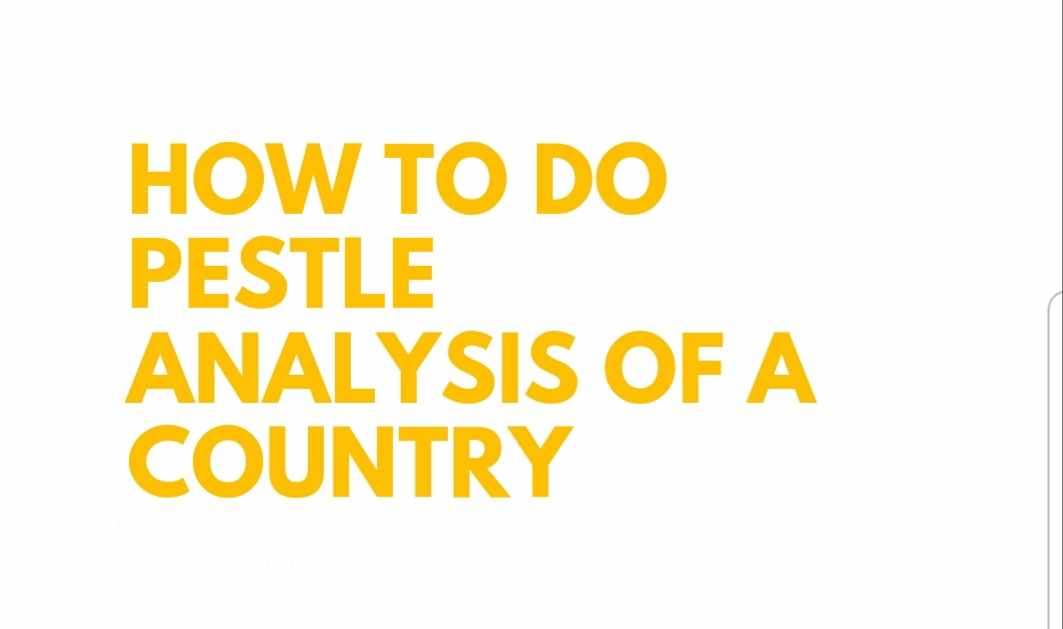In the realm of strategic planning and market analysis, understanding the macroeconomic factors influencing a country’s landscape is paramount. One effective tool for this purpose is the PESTLE analysis, an acronym for Political, Economic, Social, Technological, Legal, and Environmental factors. When applied diligently, a PESTLE analysis provides invaluable insights into the external environment, aiding decision-makers in crafting informed strategies. Here’s a comprehensive guide on how to conduct a PESTLE analysis for a country:
Table of Contents
ToggleUnderstanding the Components of PESTLE:
- Political Factors: These encompass the governmental policies, stability, and influence on businesses and markets. Analyzing political factors involves assessing aspects such as government stability, political ideology, trade regulations, taxation policies, and geopolitical risks. Changes in leadership, trade agreements, or regulatory frameworks can significantly impact businesses and industries.
- Economic Factors: Economic indicators and trends play a pivotal role in shaping business environments. Key economic factors to consider include GDP growth rates, inflation rates, exchange rates, unemployment rates, interest rates, and fiscal policies. Understanding the economic landscape helps in gauging market demand, investment opportunities, and potential risks associated with economic instability.
- Social Factors: Social factors encapsulate the demographics, cultural norms, lifestyle preferences, and societal values prevalent within a country. Analyzing social factors involves examining population demographics, income distribution, education levels, consumer behavior, health consciousness, and lifestyle trends. Insights into social dynamics aid in market segmentation, product positioning, and understanding consumer preferences.
- Technological Factors: In today’s digital age, technological advancements wield significant influence on businesses and industries. Technological factors encompass innovations, research and development (R&D), automation, digitalization, and technological infrastructure. Assessing technological factors helps in identifying opportunities for innovation, improving operational efficiency, and staying competitive in the market.
- Legal Factors: Legal factors pertain to the regulatory framework, laws, and legal systems governing businesses and industries within a country. Areas to consider include labor laws, intellectual property rights, consumer protection regulations, antitrust laws, and compliance standards. Understanding legal factors is crucial for ensuring compliance, mitigating legal risks, and navigating regulatory complexities.
- Environmental Factors: Environmental factors involve the ecological and environmental considerations impacting businesses and societies. This includes factors such as climate change, environmental regulations, sustainability practices, energy consumption, and natural resource availability. Assessing environmental factors is essential for businesses to adopt sustainable practices, mitigate environmental risks, and capitalize on emerging green markets.
Steps to Conduct a PESTLE Analysis:
- Gather Relevant Data: Collect comprehensive data pertaining to each PESTLE factor from reliable sources such as government reports, industry publications, academic journals, and reputable databases.
- Identify Key Trends and Events: Analyze recent trends, events, and developments within each factor to discern their implications for businesses and industries operating within the country.
- Evaluate Impact and Significance: Assess the impact and significance of each factor on the country’s business environment, considering both short-term and long-term implications.
- SWOT Analysis: Integrate the findings of the PESTLE analysis with an internal analysis, such as a SWOT (Strengths, Weaknesses, Opportunities, Threats) analysis, to derive actionable insights and strategic recommendations.
- Strategic Planning: Utilize the insights gained from the PESTLE analysis to inform strategic planning, decision-making, and risk management processes. Develop strategies that leverage opportunities, mitigate risks, and align with the prevailing external environment.
- Monitor and Review: Continuously monitor changes in the external environment and periodically review the PESTLE analysis to adapt strategies and ensure relevance in dynamic market conditions.
Conclusion:
Conducting a PESTLE analysis for a country enables organizations to gain a comprehensive understanding of the external factors influencing their business landscape. By systematically assessing political, economic, social, technological, legal, and environmental factors, businesses can identify opportunities, anticipate risks, and formulate strategies that are aligned with the prevailing market dynamics. Embracing the insights derived from a PESTLE analysis empowers organizations to navigate uncertainties, capitalize on emerging trends, and achieve sustainable growth in an ever-evolving global economy.






